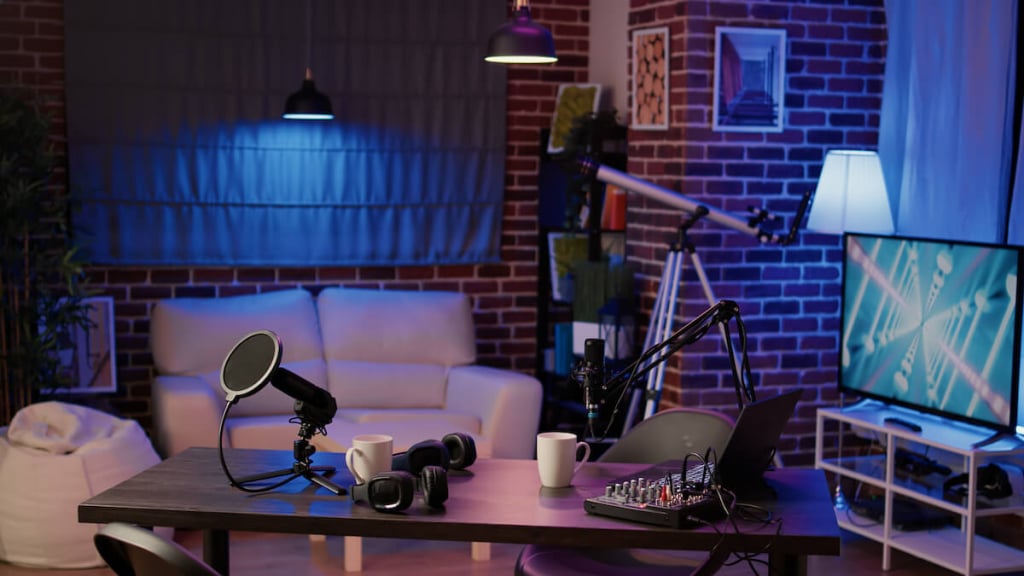
If you’re looking to transform a spare room into a home studio or a home recording studio, Camella provides the ideal place to get started. Whether you’re an artist, musician, or creative professional, setting up a dedicated space for your work can help you stay focused and boost your productivity.
In this article, we’ll discuss the steps you can take to transform a spare room in your Camella home into a functional and inspiring home studio.
Step 1: Clear Out the Space
The first step to creating home recording studios is to clear out the space. Remove all unnecessary items, such as old furniture, storage boxes, and anything else that doesn’t belong in your studio. Once you’ve cleared the room, take a moment to visualize how you want your studio to look and function. Think about the type of work you’ll be doing, the equipment you’ll need, and how you’ll use the space.
Step 2: Design the Layout
Once you have a clear idea of how you want your home recording studio to function, it’s time to design the layout. Consider where you want to position your equipment and furniture. For example, if you’re a musician, you’ll want to position your instruments in a way that’s easy to access and play. If you’re an artist, you’ll need plenty of table space for your materials.
When designing your layout, be sure to take into account any existing features of the room, such as windows, doors, and built-in storage. You may also want to consider adding additional lighting, such as task lighting or ambient lighting, to create a comfortable and functional workspace.
Step 3: Choose the Right Equipment
Choosing the right equipment is essential for creating a functional home recording studio. For recording music, you’ll need microphones, headphones, a digital audio workstation (DAW), an audio interface, and studio monitors. In your set-up, consider placing sound absorbers
If you plan on recording vocals or a live performance, you’ll also need a pop filter and a microphone stand.
If you’re a guitarist, you’ll need a high-quality acoustic guitar and an amplifier.When choosing your equipment, consider the size of your home studio and the type of music you plan on recording. If you’re into electronic music, you’ll want to invest in a MIDI keyboard and software synthesizer. Additionally, consider the quality of your equipment, as high-quality gear can greatly improve the quality of your recordings.
Acoustic Treatment
Sound waves can bounce off walls and cause unwanted echo and reverb in your recordings. To combat this, you’ll want to invest in acoustic treatment. Acoustic treatment involves placing foam panels, bass traps, and diffusers on your walls to absorb sound waves and reduce reflections. This will greatly improve the acoustics of your home studio and help you achieve great recordings.
Your Recording Space
Once you’ve set up your workstation and acoustic treatment, it’s time to set up your recording space. If you plan on recording vocals, you’ll want to choose a quiet room with little to no background noise. Additionally, you’ll want to place your microphone in a location that is free from reflections and unwanted noise. You can further improve the acoustics of your recording space by using portable vocal booths or reflection filters.
Install and Set Up Your Software
To record and edit your music, you’ll need a digital audio workstation (DAW) and editing software. Pro Tools is a popular DAW used in professional studios, but there are also free and affordable options available such as Reaper and Audacity. Once you’ve installed your software, be sure to configure your audio interface and set your input and output levels.
Step 4: Set Up Your Workstation
Once you’ve chosen your equipment, it’s time to set up your workstation. Consider the ergonomics of your workstation, such as the height of your desk, the angle of your monitor, and the placement of your keyboard and mouse. You’ll want to ensure that your workstation is comfortable and easy to use.
Additionally, consider the organization of your workstation. Use cable management tools to keep your cords tidy and out of the way. Label your equipment and storage bins, sample libraries – to keep everything organized and easy to find.
Step 5: Decorate Your Space
Finally, it’s time to decorate your home studio. Consider adding personal touches, such as artwork, posters, or photographs. Use color and texture to create a warm and inviting space. Additionally, consider adding soundproofing materials, like acoustic treatment, to reduce outside noise and improve the acoustics of your recording space.
Additional Tips
Here are some additional tips to help you transform your spare room into a functional and inspiring home recording studio in your Camella home:
Use storage solutions
It’s important to keep your home studio organized, so invest in storage solutions like shelves, cabinets, and drawers to keep your equipment and supplies easily accessible and tidy.
Consider soundproofing
If you’re a musician or recording artist, you’ll want to consider soundproofing your home studio to reduce outside noise and improve the quality of your recordings. Use sound-absorbing materials like acoustic foam panels, curtains, or rugs to dampen sound.
Invest in quality lighting
Good lighting is essential for any home studio. Consider investing in high-quality lighting fixtures like LED bulbs or studio lights to create a comfortable and well-lit workspace.
Create a comfortable seating area
It’s important to have a comfortable seating area in your home studio where you can take breaks and relax. Consider adding a comfortable chair or sofa to your studio and creating a cozy corner where you can read or take a nap.
Add inspiring decor
Surround yourself with inspiring decor like artwork, posters, or motivational quotes to keep you inspired and motivated. Consider adding plants or greenery to your studio to create a calming and natural atmosphere.
Don’t forget about ventilation
It’s important to have good ventilation in your home studio to maintain good air quality and prevent the buildup of fumes or odors. Consider installing a fan or air purifier to keep the air fresh and clean.
Keep it distraction-free
Your home studio should be a distraction-free zone where you can focus on your work. Consider removing distractions like TVs, video games, or other electronics that might distract you from your work.
When starting your home studio setup, it’s important to clear out the space and design a layout that will suit your needs. Choosing the right equipment, setting up your workstation ergonomically, and decorating your space are all important steps to take. Additional tips, such as investing in storage solutions, soundproofing, quality lighting, and creating a comfortable seating area, can also be helpful.
It’s also important to remember that creating a home studio is an ongoing project. As you continue to work in your space, you may discover new ways to improve it, such as adding acoustic treatment or upgrading your equipment. With time, dedication, and a little creativity, you can create a home studio that is both functional and inspiring, and that helps you produce great recordings or electronic music using your digital audio workstation or MIDI keyboard with high-quality studio monitors, audio interface and software like Pro Tools.
Conclusion
In conclusion, transforming a spare room in Camella into a home studio requires careful planning and thoughtful design. By following these tips, you can create a functional and inspiring space that helps you stay focused and productive. Remember to keep your studio organized, comfortable, and distraction-free, and surround yourself with inspiring decor to keep you motivated and inspired.
Transforming a spare room into a home studio in your Camella home can be a rewarding and exciting project. Whether you are into music production, artist, or creative professional, creating a dedicated space for your work can help you stay focused and produce great recordings. By following the steps above and implementing the additional tips, you can create a functional and inspiring home studio setup.

Check out our House and Lot for Sale Properties
Discover our house and lot for sale properties in the Philippines


